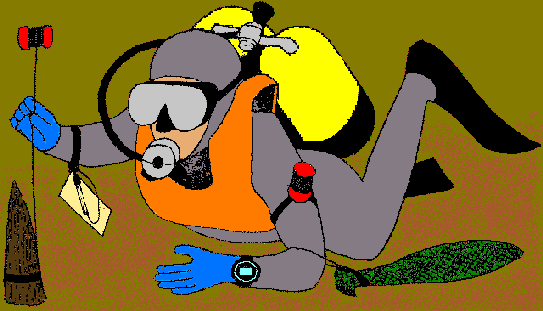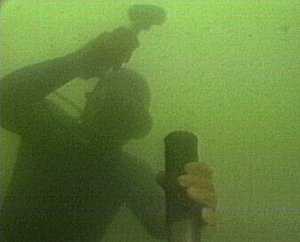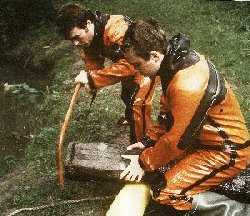|
ARCHAEOLOGY |
|
|
|
|
|
Underwater
archaeology is the research and the study of the remains in order to know
the human activities of last and is implemented in interior waters :
|
In
France, the practice of archaeology or any research being able to lead
to archaeological finds is subjected to the
law.
It is necessary to obtain the authorizations of the Direction Régionale des Affaires Culturelles and the owner of the ground. |
|
|

|
The aquatic environment is very favorable to archaeology :
|
|
|
|
| DIRECTION REGIONALE DES AFFAIRES CULTURELLES / SERVICE REGIONAL D'ARCHEOLOGIE (SRA) | Control research, delivers the authorizations, |
| DEPARTMENT DES RECHERCHES ARCHEOLOGIQUES SUBAQUATIQUES ET SOUS MARINES (DRASSM) | Government organization in charge of the coordination of research. |
| PROFESSIONALS (UNIVERSITIES, CNRS...) | In France, the permanent or temporary professional teams are very few. |
| VOLUNTARIES | Ensure a considerable part of research. |
| GOVERNMENT, LOCAL COMMUNITIES, BUILDERS, OTHERS | Financial support |
|
|
| Researches in rivers constitutes the main part of the research. They have a past more
recent than those carried out in lakes. Archaeology in rivers has been developed for 20 years, thanks to the penetration of the archaeologist
in person in the aqueous element.
The beginnings were primarily the fact of voluntary. In spite of sometimes difficult conditions of intervention, the results obtained confirmed the possibility of intervention under the water and the formidable archaeological potential of rivers like Saone, Seine, Marne, Charente, Dordogne... |
 |
| HUMAN ACTIVITIES | ARCHAEOLOGICAL REMAINS |
| Fish and drives out. | machines:
bow nets, hooks, nets and their weights...
fixed installations: fisheries, ... wrecks floating machines: pirogues, boats, fish ponds. |
| Habitat | piles, material, dumps. |
| Crossing | fords, vats, bridges. |
| Worships | many documents in particular on the fords. |
| Transport | wrecks and their cargoes, tackle of navigation: harbour anchors, blunders..., installations, drain. |
| Energetics | grinding
of cereals or the tanin, metallurgy, pressing of cloth, strikes currency,
pumping of water, towing, etc.
Floating installations (mills boats) or fixed with wheel fixed or hung to follow the variations of the level of water. The remains appear in the form of levees and foundations. |
|
|
The objective of prospecting is to locate archeological sites.
The exploitation of sources of information precedes the interventions on the ground.
|
 |
 Method:
Method:
- Displacement in lace on the river bed in front to the current in order not to being disturbed by the stirred up sediments.
- Marking out of the archaeological remains by a small buoy released from the bottom.
- Positioning compared to terrestrial reference marks.
- Catch of photographic and video view.
- Depth of a few decimetres to a few meters.
- Very reduced visibility (zero to a few meters according to the season).
- Illumination is useless because the suspended particles diffract the light.
- Commercial sailing and yachting.
 |
|
- Electric prospection by current (resistivimetry) : visualize the variations of constitution of the geologic bed on several meters of depth.
- Magnetometric prospection: reveal anomalies of the terrestrial magnetic field due to the presence of objects or archaeological structures : fittings of wrecks, cramps of sealing of blocks, ceramics concentrations.
- Side scan sonar : produced acoustic images whose solid drop shadows reveal specific anomalies of the relief corresponding to objects exceeding of the bottom.
|
|





